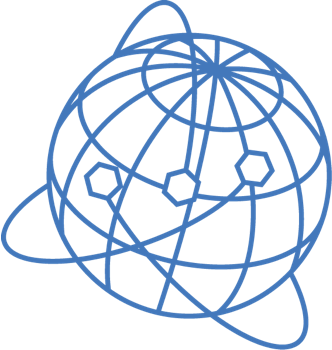Published in the Quarterly Review of the Canadian Defence & Foreign Affairs Institute summer 2010 (volume VIII, issue 2), pp.23-24
In April 2009, NATO launched a quest for a “New Strategic Concept”, its third since 1991. The hope was to find a guideline to face the issues raised by the military and political evolution of the Afghan campaign. This war is reactivating debates about issues that were supposed to be settled: the relevance and the legitimacy of conducting operations outside the Euro-Atlantic area, especially since its European member states are obviously reluctant to commit their troops to this kind of operation, or of widening the organization’s list of functions. The shadow of a defeat in Afghanistan would reinforce the opinion of several allies who wish that the North Atlantic Alliance would get “back to geographical basics”, both in terms of membership and operation area. Historically, Canadian decision-makers enthusiastically supported all forms of NATO’s expansion: new members, new operational zones, and new tasks and functions. This paper is contending that it may be time to reconsider this traditional attitude.
Regarding the question of the operational area, Ottawa should consider the possibility of limiting NATO’s activities to the European continent, and its immediate neighborhood, in order to avoid such future plights like Afghanistan that poison Canadian defense policy. There are certainly excellent arguments to support and encourage NATO’s role as “global stability provider” since alternative arrangements, such as UN missions or ad hoc coalitions, lack the cohesion or legitimacy that NATO enjoys. Nevertheless, NATO remains plagued with weaknesses, most notably, some allies’ reluctance to increase their military contribution to combat missions; the multiplicity of national caveats; and the “operational deficit” of some new members who are unable to work efficiently with the “core” members. As long as an agreement on these questions cannot be found, it would be unwise for Canada to support any position that could institutionalize the imbalance that exists in Afghanistan. In the meantime, focusing on the Euro-Atlantic zone is probably the safest attitude. One of the scenarios that sustains Canada’s opposition to any setback in the Euro-Atlantic area would be the reinforcement of the European pillar within NATO. This scenario is fuelled by the full support offered by NATO to the European Union and the complete participation of France in the military structure of the alliance that was announced in 2009. This is the most recent version of a classical Canadian concern: the emergence of a “two pillared”, or “dumbbell”, alliance in which Canada is simply marginalized as the junior North American member, disappearing in the shadow of the U.S.
A recent published by the Canadian Defence and Foreign Affairs Institute (CDFAI) and the Conference of Defence Associations Institute (CDAI), Security in an Uncertain World. A Canadian Perspective on NATO’s New Strategic Concept, reflects the fear of a “too Eurocentric” alliance (14). To avoid such a situation it proposes to “enhance its special relationships with key democratic states outside the Euro-Atlantic region” (33), hence reducing the relative weight of European members within NATO. It is even possible to go further and to imagine the creation of a “concentric NATO” within which a distinction would be established among the most important contributors to the combat missions and the other members. Obviously, it will draw a line between « inner circle”, further learners’ pool, and « out -circle », developing learners’ pool, and then create a kind of “directorate” within the alliance. To counter potential negative perceptions, NATO must emphasize that the door remain open to other members if they meet military-based criteria. Of course, such a project is double-edged, since nothing can guarantee that Canada will be invited into this “NATO directorate,” even if Canadian leaders are convinced that the first-line role of Canadian forces in Afghanistan is a ticket to get a seat at this table.
Contrary to what the dumbbell metaphor implies, a concentration on Europe should not be primarily considered from a negative perspective. This possible evolution of NATO is not as dangerous as it seems, nor lacking in opportunities. On the one hand, one can doubt NATO’s role as a “counterweight” to the American influence. Practically, NATO structures are a tool box for U.S. military/civilian decision-makers. Historically, and contrary to the generally accepted idea, Canada deals extremely well in its bilateral relations with the United States. On the other hand, moving towards a renovation of NATO would offer the occasion to revamp and reinforce the North American side of the dumbbell, that is, the network of Canadian-American bilateral institutions. A good opportunity to reinforce this network would be to create a new institution to manage common issues in the North American Arctic.
The Arctic question offers another reason why Canada should be careful to not encourage geographical expansion. According to the authors of the CDFAI/CDAI report, it is not in Canadian interestsfor NATO to limit “its mission and objectives to the collective defence of the Euro-Atlantic region, forgetting that NATO’s borders extend to the Arctic and the Pacific and disregarding security interests shared with democratic states in other regions” (emphasis added). At first glance, it seems to be in Canada’s best interests to attract NATO’s attention to the Arctic region. The political, strategic, and economic consequences of global warming in the Arctic can, potentially, affect Canada’s interests directly. No matter what happens with the materialization of anticipated threats, economic exploitation, emergence of criminal activities, increase in the sea traffic, etc., they largely hold the attention of the government and the population. NATO can play a coordination role among the allies – five of the eight Arctic States are members of NATO – to secure this area and provide a forum to address common challenges and problems; however, it is not completely in Canada’s interest to direct too much attention on the sovereignty issues in the region, especially regarding the legal status of the Northwest Passage. Canada is isolated vis-a-vis the United States and the European Union on this issue who are opposing Canada’s views. Moreover, as we said elsewhere (The Dispatch, Fall 2009), a Canada-U.S. bilateral agreement is far more interesting for Canada than a multilateral agreement.


